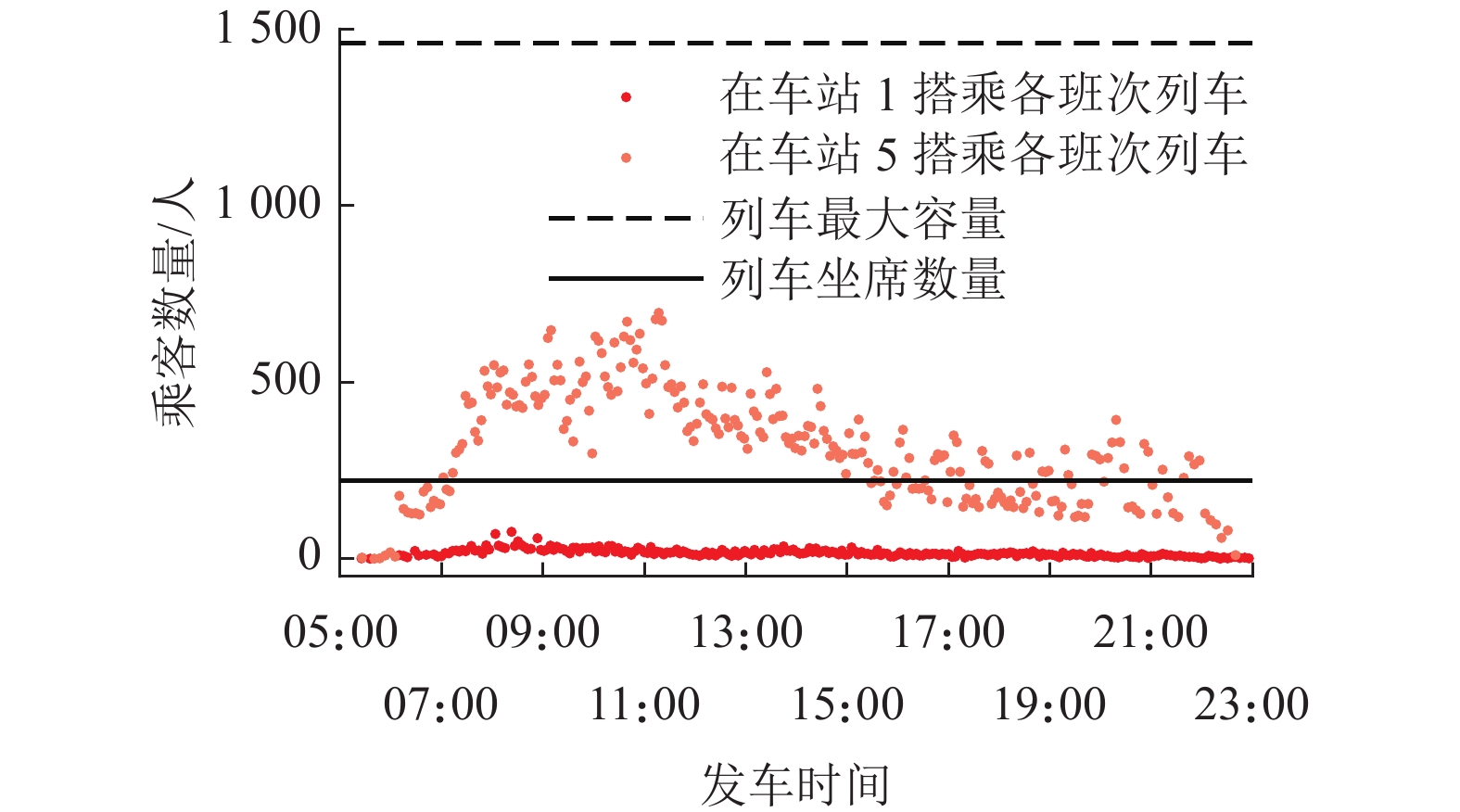Delayed-Boarding Probability Distribution for Metro Stations Using Auto Fare Collection Data
-
摘要:
为研究地铁车站留乘特征,基于地铁自动售检票(auto fare collection, AFC)刷卡数据和运行图数据,研究了地铁车站留乘概率分布估计方法. 首先,基于乘客进、出站刷卡时刻与列车到、发时刻的关系,构造了聚集时间最大值、疏解时间的概率分布函数,提出了基于截断样本的聚集、疏解时间分布估计方法;其次,通过研究乘客进、出站刷卡时间、聚集时间、疏解时间及留乘次数间的关系,提出了地铁车站留乘概率分布估计方法;最后,以某地铁区段为例,在估计了留乘程度不同、类型不同车站的聚集、疏解时间分布的基础上,估计了这些车站在平峰、高峰时段内的留乘概率分布. 案例分析表明,在显著水平为5%的条件下,聚集、疏解时间分布估计结果可信;估计所得留乘概率分布与实地调查所得一致.
Abstract:To explore the characteristics of delayed boarding in metro stations, a probability distribution estimation method based on auto fare collection (AFC) data and operation timetable data is developed. Firstly, according to the relationship between passenger tap-in and tap-out time and train arrival and departure time, a probability distribution function of maximum access time and egress time is constructed, and an estimation method using the truncated sample is developed to estimate the access and egress time distribution. Secondly, an estimation method of the delayed-boarding probability distribution is constructed by analyzing the relationship among passenger tap-in and tap-out time, access and egress time and the number of delayed-boarding times. Finally, with some metro sections as a real case study, for different levels and types of stations, the access and egress time distribution and the delayed-boarding probability are estimated. The results of the case study show that the access and egress time distributions follow the estimated distributions at a 5% significant level, and the estimated delayed-boarding probability distribution is consistent with the practical results.
-
国内大多地铁系统面临着拥挤问题,在高峰时段,即使使用最小的发车间隔,留乘依然频发. 留乘现象指:由于到达列车容量限制或无法接受拥挤程度,乘客需要在站台等候一班以上列车的现象. 留乘现象为估计和推断乘客的时空分布带来了挑战,这恰是地铁系统运营组织优化和服务水平评价的基础. 例如,留乘增加了候车时间,降低了行程时间可靠性,继而影响了乘客的路径选择行为[1-2];在构造基于网络均衡的客流分配方法时,需将留乘纳入效用函数[3-4]. 同时,留乘增大和模糊化了同一路径和不同路径上乘客旅行时间的差异,在构建基于行程时间的乘客-行程匹配模型[5-6]时也需考虑留乘的影响. 留乘概率分布可反映一定时间段内乘客在地铁车站留乘不同次数的概率,能够直观地描述地铁车站留乘的程度. 因此,研究地铁车站留乘概率分布,对提升乘客时空分布推算与估计结果的准确性具有重要意义.
国内罕有研究留乘的文献. 由于有换乘行为的乘客行程不确定因素多,研究多假设在同一车站换乘与无换乘乘客具有相同的留乘概率分布[5,7],并使用无换乘乘客的自动售检票(auto fare collection, AFC)数据和列车运行图数据估计地铁车站留乘概率分布. 无换乘乘客的出行可分为4个子过程:由进站闸机行走至站台、在站台上等待可提供服务的列车、乘坐列车旅行、由下车站台行走至出站闸机. 乘客在这4个子过程所花费的时间可依次被定义为聚集、候车、车内和疏解时间. 聚集、疏解时间的不确定是估计留乘概率分布的主要难点. 按照对聚集、疏解时间的处理和获取方式,可将现有文献划分为4类:1) 开展实地调查,获取聚集、疏解时间分布参数[8],这种方法成本高,准确性低,周期长,不适合推广应用;2) 使用极大、极小值简化聚集、疏解时间[5,7],这种方法忽略了乘客间差异,会导致留乘概率估计结果产生偏差;3) 假设同一车站的聚集与疏解时间同分布[9],乘客在疏解过程可能存在寻找最优出口的过程,这一假设有失一般性;4) 假设乘客的步行速度服从一定分布,从设计文件获取聚集、疏解时间距离[10]或假设聚集、疏解距离服从一定分布[6]的基础上,计算聚集、疏解时间,我国地铁车站内部结构复杂,设施繁多,这种方法的适用性有待考量. 总结发现,以往研究在估计留乘概率时对聚集、疏解时间的处理存在一定缺陷. 同时,专门针对地铁乘客的聚集、疏解过程的研究较少,文献[11-12]基于AFC数据研究了城市轨道交通车站的聚集、疏解过程,但两者皆未考虑留乘的影响.
下文将基于无换乘乘客进、出站刷卡时间与列车到、发时刻的关系,构建聚集、疏解时间分布估计方法;进一步通过研究乘客刷卡进、出站时刻概率密度函数,构建地铁车站留乘概率分布估计方法;最后通过案例分析验证提出方法的有效性.
1. 问题描述
AFC数据包含了每个乘客刷卡进、出站时刻及对应的车站. 列车运行图数据包含了每列列车的在各途径车站的到、发时刻. 据统计,无换乘出行占地铁系统出行总量的30%左右[5],根据抽样原则[13],使用该部分乘客的刷卡数据为样本,估计留乘概率分布是合理的.
无换乘乘客出行的4个子过程中,除车内时间外,其他都是随机的. 在乘客刷卡进站时刻已知时,由乘客的聚集时间和留乘次数可推算其候车时间,进一步可确定乘客所搭乘的列车;若得知了乘客的疏解时间,便可计算乘客的出站时刻. 然而,当仅已知乘客的进、出站刷卡时刻时,由于乘客的聚集、疏解时间及留乘次数不确定,一组进、出站刷卡时刻可能对应多个可能的行程. 行程理解为乘客在地铁网络中的时空轨迹,可以用乘客的进站时刻、聚集时间取值范围、留乘次数和疏解时间区分. 图1以时空轨迹的形式表示了在时刻 t+ 刷卡进站、时刻
t− 刷卡出站的乘客可能搭乘了3班列车,有6个可能行程. 图中:A1~A3为可能的聚集时间,E1~E3为可能的疏解时间. 留乘数为0次表示乘客到达站台后搭乘了第1班到达的列车;留乘数为1次则表示乘客到达站台后,由于第1班到达的列车满载或不能接受该车内的拥挤水平,而搭乘第2班到达的列车;其他留乘次数含义可依次类推. 观察可发现:搭乘了同一班列车的乘客的行程和留乘次数有可能不同. 通过求解满足式(1)、(2)的列车集合的交集,可推测出任意无换乘乘客可能搭乘的列车.列车 j 在出发站的发车时刻 T−, j晚于乘客的刷卡进站时刻 t+,即
T−,j>t+, (1) 列车 j 在到达站的到达时刻 T+, j早于乘客的刷卡出站时刻 t−,即
T+,j<t−. (2) 基于乘客的进出站时刻和各班可能搭乘列车的到发时刻,可推算出各可能行程的聚集时间取值范围、具体留乘次数和具体的疏解时间. 表1罗列了图1所示情况下乘客所有可能行程的特征.
表 1 乘客的可能行程特征列示Table 1. Features of feasible passenger itineraries行程
编号聚集时间 留乘数/
次疏解
时间搭乘列车
编号1 [0,T−,1−t+) 0 t−−T+,1 1 2 [0,T−,1−t+) 1 t−−T+,2 2 3 [0,T−,1−t+) 2 t−−T+,3 3 4 [T−,1−t+,T−,2−t+) 0 t−−T+,2 2 5 [T−,1−t+,T−,2−t+) 1 t−−T+,3 3 6 [T−,2−t+,T−,3−t+) 0 t−−T+,3 3 由表1推测可知:可能行程对应的聚集、疏解时间取值越极端,该行程的发生可能性越小. 若能掌握聚集、疏解及留乘概率分布,刷卡进站时刻确定条件下,可计算任意乘客各可能行程的概率密度;将各可能行程概率密度相加,则可进一步计算乘客出站时刻的概率密度. 假设车站的留乘概率分布在一个较短的时间段内保持不变[5-7,10],在聚集、疏解时间概率分布和乘客进出站刷卡时刻已知时,使用极大似然估计法可估计各时间段内的留乘概率分布.
2. 模型构建
以下变量及其含义将贯穿下文:
t+,i 、t−,i 分别为乘客 i 进、出站刷卡时刻;si 为乘客 i 的目的车站;T−,i,j 、T+,i,j 分别为乘客 i 第 j 班可能搭乘的列车在乘客出发站的发车时刻、目的站的到达时刻;Fi 为乘客 i 可能搭乘的列车数量;HA,i 、HE,i 分别为乘客 i 在聚集和疏解时的发车间隔;Gi 为乘客 i 的刷卡进站时刻与最近一列已发列车发车时刻的间隔;Ii,m,n 为乘客 i 的某一可能出行行程,n 为乘客留乘次数,m 反映乘客到达站台时刻在第 m - 1 和 m 班可行列车发车时刻之间,且1⩽m⩽Fi,0⩽n⩽Fi−m,m,n∈N ;Ai 、Ei 分别为乘客 i 的聚集、疏解时间;Ai,max 为乘客 i 聚集时间最大可能值;d 为列车运行方向或乘客出发方向,分上、下行;
Ds,d 为目的站 s 方向 d 的乘客集合;Os,d 为出发站 s 方向 d 的乘客集合;Ns,d,q 为时间段 q 内车站 s 方向 d 上乘客的最大留乘次数,Ns,d,q = maxi∈Os,d{Fi}−1,t+,i∈q ;fA,s,d(•) 、fE,s,d(•) 分别为车站 s 方向 d 聚集时间、疏解时间的概率密度函数;fG,i(•) 为乘客 i 刷卡进站时刻与其出行方向上最近一列已发列车发车时刻间隔的概率密度函数;βs,d,q,n 为时段 q 内在车站 s 前往方向 d 的乘客留乘 n 次的概率,Ns,d,q∑n=0βs,d,q,n=1 .2.1 聚集与疏解时间分布估计
聚集、疏解时间分布是估计留乘概率的关键,本文提出了基于AFC数据和列车运行图数据的聚集、疏解时间分布估计方法. 统计发现大量无换乘乘客只有一个可行行程[14],结合AFC数据与列车运行图数据,可以直接计算这部分乘客的聚集时间与候车时间之和以及疏解时间. 由于这部分乘客的聚集、疏解时间是小于发车时间间隔的,不能代表所有乘客的聚集、疏解时间规律,只能作为截断样本,因此依据文献[15],构造条件概率函数估计聚集时间与疏解时间分布.
1) 疏解时间
对于只有一种可能行程的乘客,其疏解时间可由其刷卡出站时刻与乘坐列车的到站时刻之差计算,如式(3)所示.
Ei=t−,i−T+,i,1,i∈{i|Fi = 1}. (3) 假设全天内任意车站
s ,任意方向d 的所有乘客的疏解时间服从均值为μE,s,d ,标准差为σE,s,d 的正态分布fE,s,d(•) [7,16]. 对于只有一种可能行程的乘客,其疏解时间是小于其出站疏解时的发车间隔的,则这部分乘客的疏解时间概率密度函数可用式(4)所示的条件概率密度表示.gE,s,d(Ei)=fE,s,d(Ei)/P(Ei<HE,i)=fE,s,d(Ei)∫HE,i0fE,s,d(ε)dε,i∈{i|Fi = 1}, (4) 式中:
gE,s,d(•) 表示车站 s 方向 d 上的只有一种可行行程乘客的疏解时间概率密度函数;P(Ei<HE,i) 为乘客i的疏解时间小于其在疏解时的发车间隔的概率.假设所有乘客的疏解时间相互独立[9],将目的站与出行方向相同且只有一种可能行程乘客的疏解时间概率密度相乘,再取对数,得到式(5)表示的对数似然函数. 使用极大似然估计法估计该方向上该车站的疏解时间分布参数
μE,s,d 和σE,s,d .lnLE,s,d=ln(∏gE,s,d(Ei))=∑ln(fE,s,d(Ei)∫HE,i0fE,s,d(ε)dε),i∈{i|Fi = 1}∩Ds,d, (5) 式中:
LE,s,d 为车站 s 在方向 d 上的疏解时间似然函数.2) 聚集时间
对于只有一种可能行程的乘客,由于候车时间的存在,只能计算其候车时间与聚集时间之和,这个和同时又是聚集时间可能取值的最大值,使用式(6)计算其刷卡进站时刻与乘坐列车的发车时刻之差得到.
Ai=T−,i,1−t+,i,i∈{i|Fi = 1}. (6) 为更准确地表达只有一班可行列车乘客的聚集时间最大值概率密度函数,引入
Gi 的概率分布,如图2所示,假设乘客在任意发车间隔内是均匀刷卡进站的[17],即Gi~U(0,HA,i) ,满足式(7)所示关系.Gi=HA,i−(T−,i,1−t+,i)\;=HA,i−Ai,max. (7) 对于只有一种可能行程的乘客,
Ai,max =HA,i−Gi ,即Ai⩽Hi−Gi . 假设在同一车站上车的所有乘客的聚集时间服从均值为μA,s,d ,标准差为σA,s,d ,概率密度函数为fA,s,d(•) 的正态分布[7,16],则车站s方向d上的只有一个可能行程乘客的聚集时间最大值的概率密度函数为gA,s,d(Ai,max)=fG,i(Gi)P(0<Ai<Ai,max|Ai+Gi⩽HA,i)=1HA,i∫Ai,max0fA,s,d(ε)dε∫HA,i0∫ε01HA,ifA,s,d(ξ)dξdε=∫Ai,max0fA,s,d(ε)dε∫HA,i0∫ε0fA,s,d(ξ)dξdε,i∈{i|Fi=1}. (8) 假设所有乘客的聚集时间相互独立[9],将出发站与出行方向相同,且只有一种可能行程乘客的聚集时间最大值的概率密度相乘,再取对数,得到式(9)所示的对数似然函数. 使用极大似然估计法可估计方向 d 车站 s 的聚集时间分布均值
μA,s,d 和标准差σA,s,d .lnLA,s,d=ln(∏gA,s,d(Ai))=∑ln(∫Ai0fA,s,d(ε)dε∫HA,i0∫ε0fA,s,d(ξ)dξdε),i∈{i|Fi = 1}∩Os,d, (9) 式中:
LA,s,d 为车站s在d方向上的聚集时间似然函数.2.2 留乘概率
假设在一个时段 q 内,车站 s 方向 d 上的留乘概率服从参数为
βs,d,q,0,βs,d,q,1,⋯,βs,d,q,Ms,d,q 的多项分布[5-7,10],则乘客 i 在时刻t+,i 刷卡进站的条件下,以行程Ii,m,n 出行,并在t−,i 出站的概率密度为fm,n(t−,i|t+,i)=βs,d,q,nfE,si,d(t−,i−T+,i,m+n)×P(T−,i,m−1−t+,i⩽Ai<T−,i,m−t+,i)=βs,d,q,nfE,si,d(t−,i−T+,i,m+n)∫T−,i,m−t+,iT−,i,m−1−t+,ifA,s,d(ε)dε,i∈Os,d∩{i|t+,i∈q}. (10) 时段 q 内自 s 站出发出行方向为 d 的乘客 i 在时刻
ti,+ 刷卡进站、t−,i 刷卡出站的概率密度fs,d,q(•) 为乘客 i 所有可能行程对应的出站时刻为t−,i 的概率密度之和,如式(11)所示.fs,d,q(t−,i|t+,i)=Fi∑m=1Fi−m∑n=0fm,n(t−,i|t+,i)=Fi∑m=1F−m∑n=0βs,d,q,nfE,si,d(t−,i−T+,i,m+n)∫T−,i,m−t+,iT−,i,m−1−t+,ifA,s,d(ε)dε,i∈Os,d∩{i|t+,i∈q}. (11) 假设乘客的旅行时间不受其他乘客影响[9],将时段 q 内所有出发站与出行方向相同乘客的出站时刻概率密度相乘,再取对数,得到式(12)表示的似然函数. 以极大似然估计法可估计任意研究时段 q 车站 s 方向 d 的留乘概率分布参数.
lnLs,d,q,l=ln(∏fs,d,q(t−,i|t+,i))=∑ln(Fi∑m=1F−m∑n=0βs,d,q,nfE,si,d(t−,i−T+,i,m+n)∫T−,i,m−t+,iT−,i,m−1−t+,ifA,s,d(ε)dε),i∈Os,d∩{i|t+,i∈q}, (12) 式中:
Ls,d,q,l 为在时段 q 内自 s 站出发,出行方向为 d 的乘客进、出站刷卡时间的似然函数.3. 案例分析
如图3,案例数据来源于某市线路Ⅰ(由21个车站组成的区段)和线路Ⅱ(由22个车站组成的区段)的某日上行方向AFC刷卡和列车运行图数据. 为验证本文方法的有效性及一般性,下文呈现了始发站1、5,普通站2、6,换乘站3、7的上行方向聚集、疏解时间分布估计结果,与平高峰时段留乘概率分布估计结果.
根据式(5)和式(9)表示的对数似然函数,使用MATLAB的fminunc函数优化对数似然函数值,估计案例网络中除车站1、5外所有车站上行方向的疏解时间,除车站4、8外所有车站上行方向的聚集时间,并使用Kolmogorov-Smirnov检验验证了估计结果,部分估计结果和检验结果(P 值)如表2所示. 检验结果显示:在显著水平为5%的条件下(P 值
> 0.05),估计结果可信. 此外,对比发现:在车站2、3、6、7,其研究方向上的疏解与聚集时间分布均值近似,标准差差别较大,可能与疏解过程中存在的乘客寻找最优出口的行为有关.表 2 部分车站的聚集、疏解时间分布参数估计值Table 2. Estimated distribution parameters for access and egress time at stations车站 聚集时间 疏解时间 μA,s,d σA,s,d P 值 μE,s,d σE,s,d P 值 1 89.57 20.28 0.32 2 99.45 40.45 0.15 101.26 39.73 0.67 3 127.99 41.61 0.06 149.72 42.36 0.83 4 10.23 8.73 0.53 5 127.17 44.14 0.12 6 57.40 26.43 0.98 63.82 27.86 0.99 7 155.66 36.59 0.13 161.99 50.42 0.97 8 110.04 26.73 0.36 基于估计所得的聚集、疏解时间分布,根据式(12),使用MATLAB遗传算法工具箱优化对数似然函数值,估计车站1~3和车站5~7上行方向的平、高峰时段的留乘概率分布参数,估计结果见表3估计值列. 以往文献多假设留乘概率不变的时段 q为1.0 h[10],q 可根据实际需求调整, q 值越小,估计精度越高,本文取 q 为0.5 h. 于案例日期,分别使用“跟踪法”实地调查了案例车站研究时段的真实留乘概率,调查结果见表3调查值列. 估计值与调查值对比表明,对于留乘程度不同、类型不同的车站,在平峰及高峰时段内,本文所得估计值与实地调查值基本一致.
由表3可知:在高峰时段,案例中属于同一类别的两车站留乘程度均不同. 因为在高峰时段,由始发站5乘车的乘客会迅速占满列车坐席,导致因希望得到座位而等候下一班列车的留乘时有发生;而始发站1因乘客进站量较小,任意时段登车的乘客都能找到座位,而几乎不会发生留乘,如图4所示.
表 3 不同时间段上行方向留乘概率分布参数估计与调查结果Table 3. Estimated left-behind distribution parameters of delayed boarding and practical results in different periods车站 时段 βs,d,q,0 βs,d,q,1 βs,d,q,2 βs,d,q,3 βs,d,q,4 βs,d,q,5 βs,d,q,6 估计 调查 估计 调查 估计 调查 估计 调查 估计 调查 估计 调查 估计 调查 1 高峰 08:30—09:00 0.974 1.000 0.003 0.022 平峰 15:30—16:00 0.996 1.000 0.004 2 高峰 08:30—09:00 0.712 0.720 0.164 0.140 0.105 0.110 0.013 0.030 0.005 平峰 15:30—16:00 0.997 1.000 0.002 0 3 高峰 08:30—09:00 0.002 0.030 0.014 0 0.076 0.060 0.254 0.280 0.528 0.490 0.118 0.120 0.007 0.020 平峰 15:30—16:00 0.962 0.980 0.027 0.020 0.008 0.020 5 高峰 09:00—9:30 0.842 0.870 0.125 0.127 0.007 0.003 0.014 0.006 0.005 平峰 20:00—20:30 0.925 0.931 0.074 0.069 0.001 0 6 高峰 09:00—9:30 0.985 0.980 0.013 0 0.002 0.003 平峰 20:00—20:30 0.997 1.000 0.002 0.001 7 高峰 16:30—17:00 0.910 0.940 0.055 0.060 0.024 0.012 0 平峰 09:00—09:30 0.997 0.990 0.003 0.010 4. 结 论
本文以无换乘乘客的刷卡数据为基础,依据刷卡时刻与列车运行图间的关系,分段分析了无换乘乘客的出行过程;提出了地铁车站聚集、疏解时间分布估计方法;构造了地铁车站留乘概率估计方法. 案例估计了留乘程度不同的分别属于始发、换乘、普通3种类型车站的聚集、疏解时间分布及留乘概率分布.
1) 相较于聚集时间,疏解时间分布标准差可能更大,直接使用车站的疏解时间分布代替聚集时间分布会导致留乘概率估计结果偏差;
2) Kolmogorov-Smirnov检验表明:在显著水平为5%的条件下,聚集、疏解时间分布估计结果可信.
3) 在不同类别、不同留乘程度车站估计出的留乘概率分布同调查值规律相符;
4) 补充了国内对于留乘研究的缺失,提出的地铁车站聚集、疏解时间分布估计方法,解决了以往研究方法中获取聚集、疏解时间分布难度大、准确性低的问题;
5) 分析网络结构、客流特征、选择偏好等因素对留乘和本文方法适用性的影响是进一步研究内容.
致谢:中铁二院工程集团有限责任公司科研项目 (KYY2019027(19-20))的支持.
-
表 1 乘客的可能行程特征列示
Table 1. Features of feasible passenger itineraries
行程
编号聚集时间 留乘数/
次疏解
时间搭乘列车
编号1 [0,T−,1−t+) 0 t−−T+,1 1 2 [0,T−,1−t+) 1 t−−T+,2 2 3 [0,T−,1−t+) 2 t−−T+,3 3 4 [T−,1−t+,T−,2−t+) 0 t−−T+,2 2 5 [T−,1−t+,T−,2−t+) 1 t−−T+,3 3 6 [T−,2−t+,T−,3−t+) 0 t−−T+,3 3 表 2 部分车站的聚集、疏解时间分布参数估计值
Table 2. Estimated distribution parameters for access and egress time at stations
车站 聚集时间 疏解时间 μA,s,d σA,s,d P 值 μE,s,d σE,s,d P 值 1 89.57 20.28 0.32 2 99.45 40.45 0.15 101.26 39.73 0.67 3 127.99 41.61 0.06 149.72 42.36 0.83 4 10.23 8.73 0.53 5 127.17 44.14 0.12 6 57.40 26.43 0.98 63.82 27.86 0.99 7 155.66 36.59 0.13 161.99 50.42 0.97 8 110.04 26.73 0.36 表 3 不同时间段上行方向留乘概率分布参数估计与调查结果
Table 3. Estimated left-behind distribution parameters of delayed boarding and practical results in different periods
车站 时段 βs,d,q,0 βs,d,q,1 βs,d,q,2 βs,d,q,3 βs,d,q,4 βs,d,q,5 βs,d,q,6 估计 调查 估计 调查 估计 调查 估计 调查 估计 调查 估计 调查 估计 调查 1 高峰 08:30—09:00 0.974 1.000 0.003 0.022 平峰 15:30—16:00 0.996 1.000 0.004 2 高峰 08:30—09:00 0.712 0.720 0.164 0.140 0.105 0.110 0.013 0.030 0.005 平峰 15:30—16:00 0.997 1.000 0.002 0 3 高峰 08:30—09:00 0.002 0.030 0.014 0 0.076 0.060 0.254 0.280 0.528 0.490 0.118 0.120 0.007 0.020 平峰 15:30—16:00 0.962 0.980 0.027 0.020 0.008 0.020 5 高峰 09:00—9:30 0.842 0.870 0.125 0.127 0.007 0.003 0.014 0.006 0.005 平峰 20:00—20:30 0.925 0.931 0.074 0.069 0.001 0 6 高峰 09:00—9:30 0.985 0.980 0.013 0 0.002 0.003 平峰 20:00—20:30 0.997 1.000 0.002 0.001 7 高峰 16:30—17:00 0.910 0.940 0.055 0.060 0.024 0.012 0 平峰 09:00—09:30 0.997 0.990 0.003 0.010 -
[1] 张永生,姚恩建,刘莎莎,等. 城市轨道交通乘客半补偿路径选择建模与应用[J]. 铁道学报,2018,40(2): 1-7. doi: 10.3969/j.issn.1001-8360.2018.02.001ZHANG Yongsheng, YAO Enjian, LIU Shasha, et al. Metro passengers’ semi-compensatory route choice modeling and application[J]. Journal of the China Railway Society, 2018, 40(2): 1-7. doi: 10.3969/j.issn.1001-8360.2018.02.001 [2] 曾璐,刘军,秦勇,等. 基于 AFC 数据的突发事件下城市轨道交通乘客路径决策研究[J]. 铁道学报,2019,41(8): 9-18. doi: 10.3969/j.issn.1001-8360.2019.08.002ZENG Lu, LIU Jun, QIN Yong, et al. Route choice behavior of passengers in urban rail transit under emergency based on AFC data[J]. Journal of the China Railway Society, 2019, 41(8): 9-18. doi: 10.3969/j.issn.1001-8360.2019.08.002 [3] CATS O, HARTL M. Modelling public transport on-board congestion:comparing schedule-based and agent-based assignment approaches and their implications[J]. Journal of Advanced Transportation, 2016, 50(6): 1209-1224. doi: 10.1002/atr.1398 [4] 周玮腾,韩宝明. 考虑列车容量限制的地铁网络客流分配模型[J]. 华南理工大学学报 (自然科学版),2015,43(8): 126-134,143.ZHOU Weiteng, HAN Baoming. Passenger flow assignment model of subway networks under train capacity constraint[J]. Journal of South China University of Technology (Natural Science Edition), 2015, 43(8): 126-134,143. [5] ZHAO J J, ZHANG F, TU L, et al. Estimation of passenger route choice pattern using smart card data for complex metro systems[J]. IEEE Transactions on Intelligent Transportation Systems, 2017, 18(4): 790-801. doi: 10.1109/TITS.2016.2587864 [6] ZHU Y W, KOUTSOPOULOS H N, WILSON N H M. A probabilistic passenger-to-train assignment model based on automated data[J]. Transportation Research Part B:Methodological, 2017, 104: 522-542. doi: 10.1016/j.trb.2017.04.012 [7] ZHU W, WANG W, HUANG Z D. Estimating train choices of rail transit passengers with real timetable and automatic fare collection data[J]. Journal of Advanced Transportation, 2017, 2017: 5824051.1-5824051.12. [8] PAUL E C. Estimating train passenger load from automated data systems: application to London underground[D]. New York: Massachusetts Institute of Technology, 2010. [9] TIRACHINI A, SUN L J, ERATH A, et al. Valuation of sitting and standing in metro trains using revealed preferences[J]. Transport Policy, 2016, 47: 94-104. doi: 10.1016/j.tranpol.2015.12.004 [10] ZHU Y W, KOUTSOPOULOS H N, WILSON N H M. Inferring left behind passengers in congested metro systems from automated data[J]. Transportation Research Part C:Emerging Technologies, 2018, 94: 323-337. doi: 10.1016/j.trc.2017.10.002 [11] XIE X Y, LEURENT F. Comparison of passenger walking speed distribution models in mass transit stations[J]. Transportation Research Procedia, 2017, 27: 696-703. doi: 10.1016/j.trpro.2017.12.081 [12] LEURENT F, XIE X Y. Exploiting smartcard data to estimate distributions of passengers’ walking speed and distances along an urban rail transit line[J]. Transportation Research Procedia, 2017, 22: 45-54. doi: 10.1016/j.trpro.2017.03.006 [13] FULLER W A. Sampling statistics[M]. Hoboken: John Wiley & Sons, 2011. [14] HÖRCHER D, GRAHAM D J, ANDERSON R J. Crowding cost estimation with large scale smart card and vehicle location data[J]. Transportation Research Part B:Methodological, 2017, 95: 105-125. doi: 10.1016/j.trb.2016.10.015 [15] WOLYNETZ M. Algorithm AS 139:Maximum likelihood estimation in a linear model from confined and censored normal data[J]. Applied Statistics, 1979, 28(2): 195-206. doi: 10.2307/2346749 [16] YIN H D, WU J J, LIU Z Y et al. Optimizing the release of passenger flow guidance information in urban rail transit network via agent-based simulation[J]. Applied Mathematical Modelling, 2019, 72: 337-355. doi: 10.1016/j.apm.2019.02.003 [17] INGVARDSON J B, NIELSEN O A, RAVEAU S, et al. Passenger arrival and waiting time distributions dependent on train service frequency and station characteristics:a smart card data analysis[J]. Transportation Research Part C:Emerging Technologies, 2018, 90: 292-306. doi: 10.1016/j.trc.2018.03.006 期刊类型引用(2)
1. 路昊. 基于AFC数据的城轨旅客乘车方案估计方法. 综合运输. 2024(12): 113-118 .  百度学术
百度学术2. 刘奕苁. 基于AFC数据的地铁乘客候车时间估计方法. 综合运输. 2022(10): 96-102 .  百度学术
百度学术其他类型引用(5)
-









 下载:
下载:


































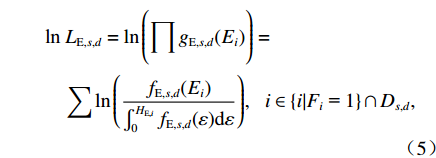














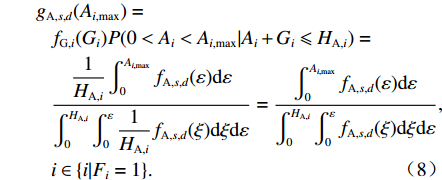


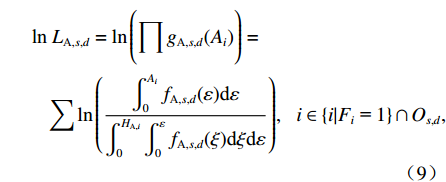










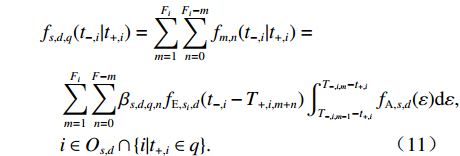





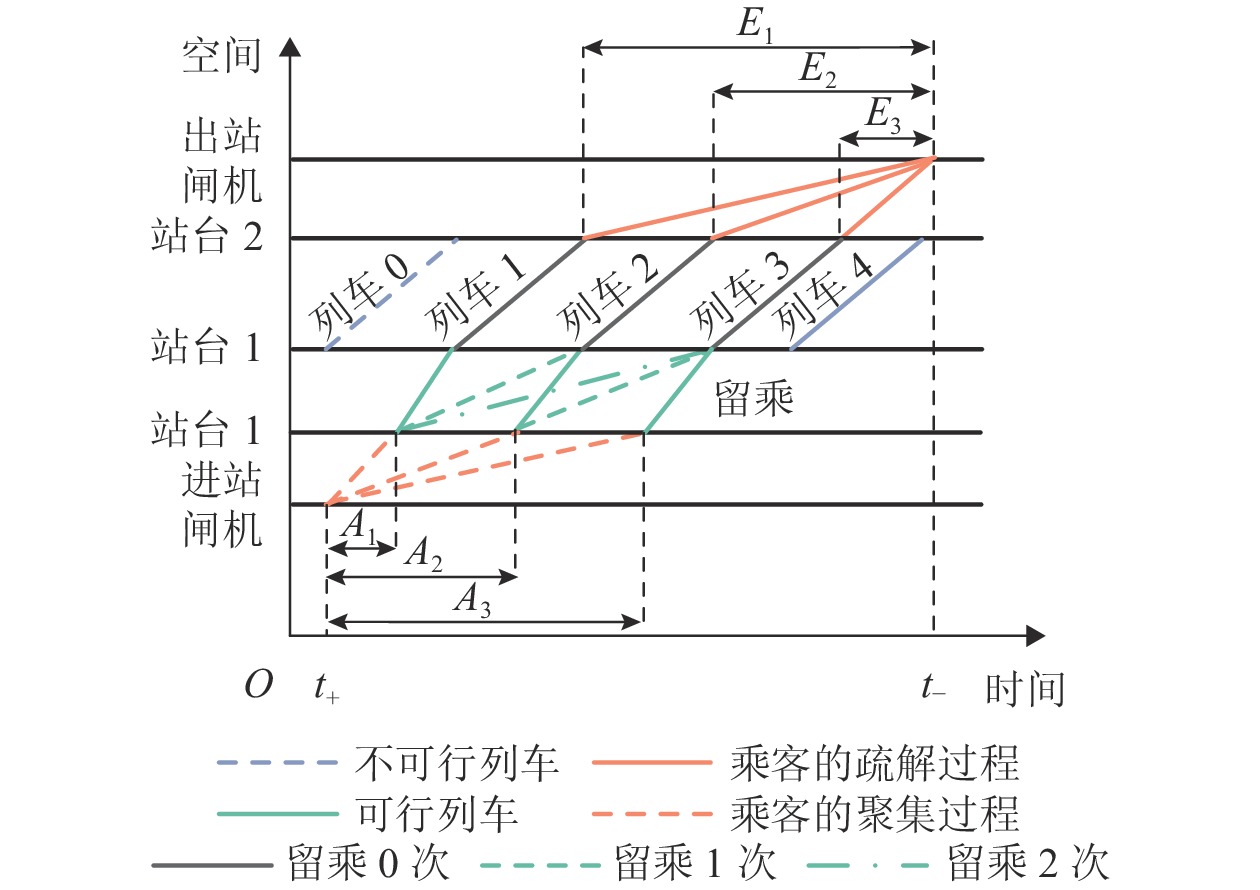
 下载:
下载:



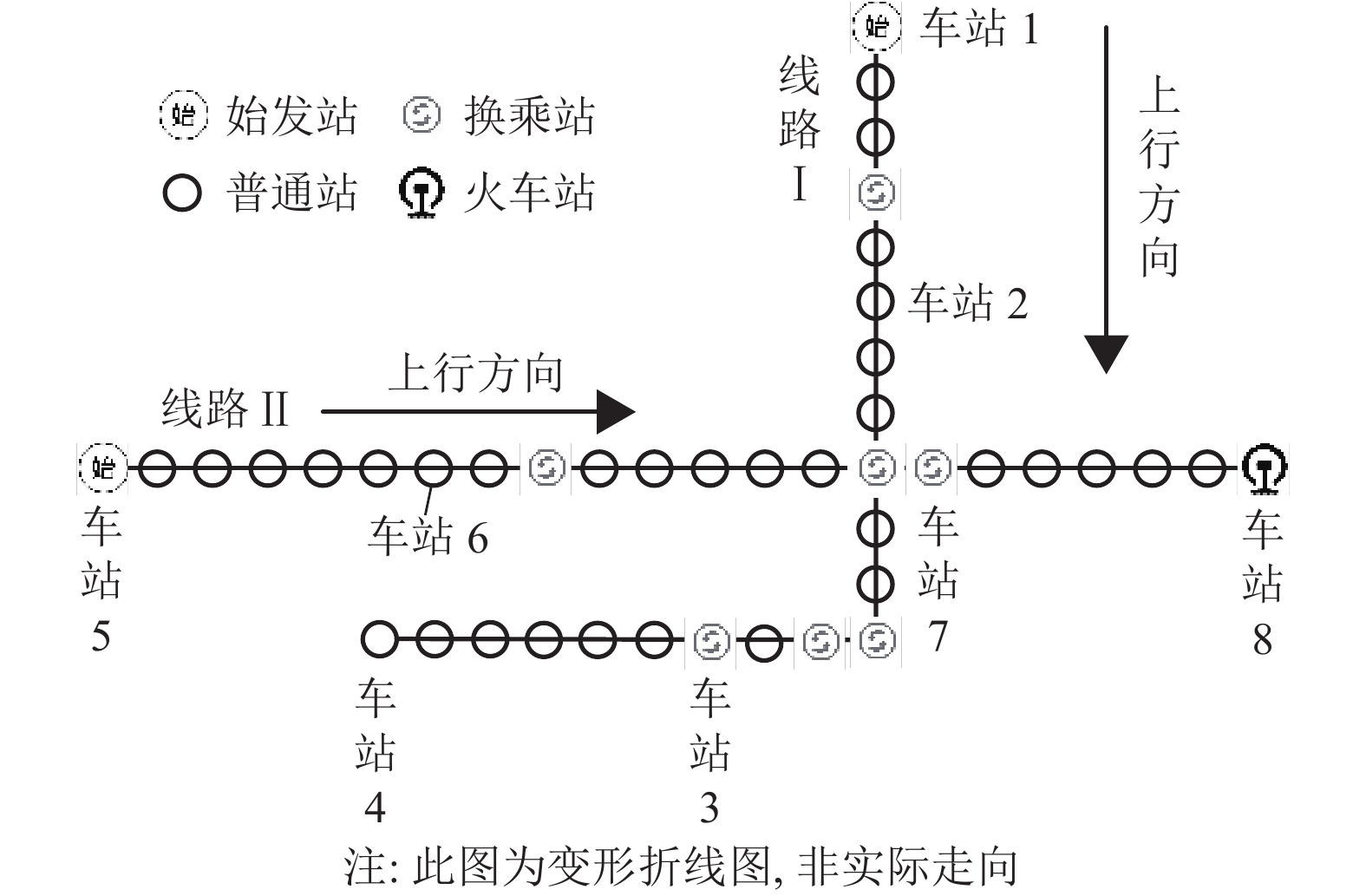

 百度学术
百度学术




